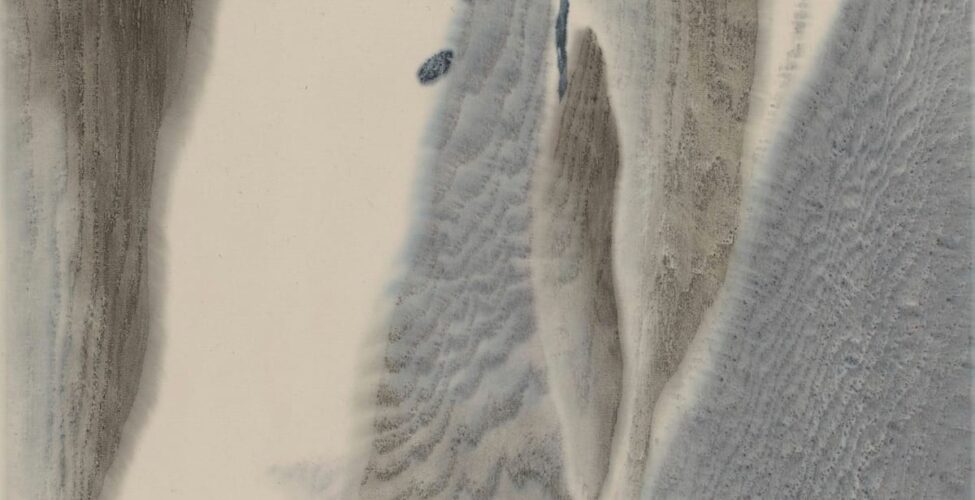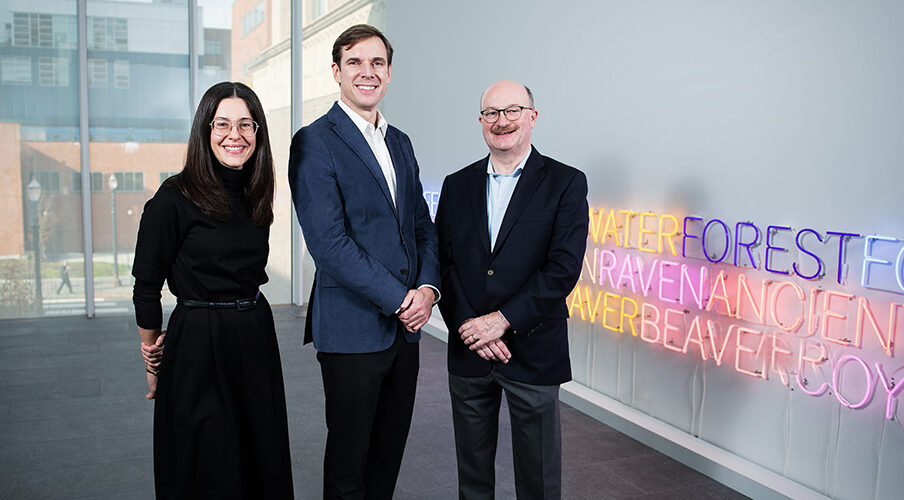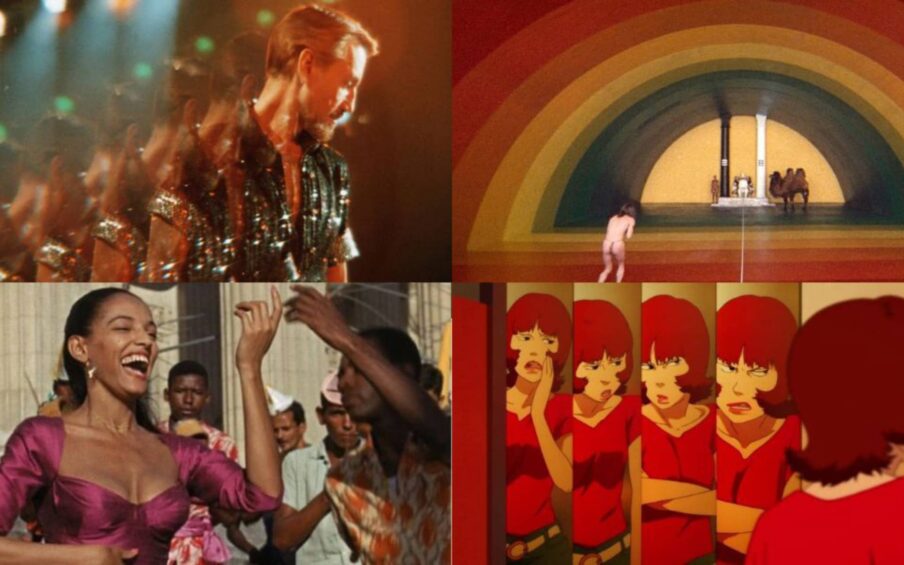Zhao Zongzao’s mist-shrouded mountain landscape has reminded me of the foggy scenes of Oregon these last weeks. Zhao’s subject is the natural scenic area around Mount Huangshan (Yellow Mountain), south of the Yangtze River. One dramatic site is named for the celestial Mount Penglai, legendary island of the immortals. Here, the artist evokes the soaring verticality of the area’s jutting rock formations, topped by dark green silhouettes of scrubby, stubborn pines. Emphasizing the grain of the wood, he creates a stunning landscape condensed to just a few elements, but given extraordinary depth and texture through color gradations, softly diffused at the edges to evoke the haze of mist and distance. Below, the white of the paper is cleverly deployed as a band of rolling clouds.
Zhao Zongzao built a distinguished career as professor of printmaking at the China Academy of Arts in Hangzhou. His early work was devoted to politically themed woodcuts printed with oil-based ink, in the manner of the New Woodcut movement of the 1930s and 40s. The Mount Huangshan series of the 1980s marks Zhao’s turn to a new kind of subtle realism, combining woodgrain with water-soluble colors and the nuanced qualities of a wash painting. The towering rocky protrusions of Zhao’s print are ghostly shapes, dimly seen but assuredly real, and all the more majestic in their natural beauty for their otherworldliness.
—Jeannie Kenmotsu, Japan Foundation Associate Curator of Japanese Art & Interim Head of Asian Art
Zhao Zongzao (Chinese, born 1931). “Penglai Hermit,” from the series Yellow Mountain, 1982. Woodblock print on paper. The Vivian and Gordon Gilkey Graphic Arts Collection, 1997.228.437



